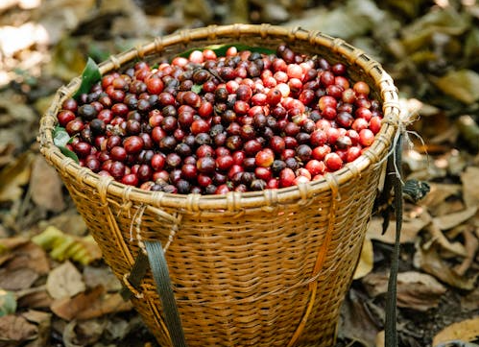Origin of the Month
Our monthly coffee selections!
Learn about our monthly coffee selections! Every 30 days we bring in a new exotic origin and a new premium origin every quarter.

Origin of the Month january 2026
honduras reserva guama danta
Honduras Reserva Guama Danta Organic SHP/EP
Over the years, we have brought you some fantastic coffees grown in Honduras:
- Those who have been customers for a long time surely remember La Hondurena.
- Then there was the El Canecho Micro-lot, grown on a 1.2-acre farm, and the
- Reserve Pacavita with those notes of Roasted Almond, Green Apple, and Vanilla.
This Guama Danta is equally impressive.
The Farmers
The Comoyagua region of Honduras is home to just about every possible micro-climate and this coffee is an example of the nuanced and complex coffees the farmers are producing here.
Many coffee farmers contributed to this lot, all of them seen as community leaders who grow their coffee for the benefit of their people. They are a community of farmers dedicated to helping everyone advance. One of them stands out, though.
Alfonso Ramos has been growing coffee here for more than 50 years. He shares his bountiful experience and knowledge with all the farmers around him and helps them get their coffee to market and negotiate fair prices for their harvests. All these farmers are continually working to improve the quality of their product.
They are experimenting with new processing techniques and growing high-profile varietals. Their objective: kick
down the door of the specialty coffee market and earn the money that comes with it. Keep your eyes on Honduran coffees in the future because it is bright.
The Coffee
The Comoyagua region is Honduras’ most productive and diverse coffee producing region. The farmers grew this coffee at elevations from 4100-5000 feet above sea level.
The varietals in this lot include: Lempiras, a high-yeilding dwarf tree, Caturra, a natural mutation of the Bourbon variety, Catuai, a cross between highly productive Mundo Novo and compact Caturra, IHCAFE 90, a high yielding dwarf tree and
Catimor, also a high yielding tree.
This lot was washed processed, which results in clean, bright, and consistent coffee flavors throughout the lot. This coffee has a
medium body, medium acidity and, while sipping, you may detect flavor notes that remind you of Cocoa Powder, Praline, Brown Spice, Hazelnut, and Red Apple.

Origin of the Quarter Q4 2025
BALI ORGANIC BLUE MOON-WET-HULLED
Believe it or not, this is only the third coffee grown in Bali that we have offered. The first was a different Bali Blue Moon, the second was Bali Kintamani Highlands (you may remember the deep fruity notes). All three are premium origin coffees.
The Farmers Almost all of Bali’s coffee production comes from small family-owned farms, each of only an acre or two, where the farmers cultivate coffee alongside citrus trees in the rich volcanic soils of Mount Agung’s Kintamani highlands. In the 1970’s and 1980’s the Balinese government was determined to energize coffee production on the island.
They distributed coffee seedlings (most of which were bourbon and typica varietals), to the small farmers along with shade trees such as Erythrina, Albizia, tangerine and orange under which to grow the coffee.
These smallholder farmers have been perfecting their craft over generations. They maintain traditional farming methods and produce coffee of exceptional quality. These farmers practice the Subak Abian system of farming. This method was developed by Hindu priests practicing Tri Hita Karana more than 1,000 years ago.
It’s more a philosophy than a farming method, though, as it centers on principles of mutual cooperation, environmental stewardship, and spiritual harmony. The Subak Abian system focuses on achieving harmony between the environment, humans, and God. These spiritual and ecological principles guide coffee cultivation practices, which means pesticides and synthetic fertilizers are never used, resulting in naturally organic coffee production.
The Coffee
The Kintamani Highlands of Central Bali provide exceptional growing conditions for coffee. Situated at altitudes between 3,900 to 5250 feet above sea level, the region benefits from the rich volcanic loam soil created by Mount Agung’s ancient eruptions.
This volcanic soil, combined with the tropical highland climate and distinct wet and dry seasons, creates the perfect environment for slow cherry development and complex flavor formation. The unique terroir contributes to the coffee’s distinctive characteristics and exceptional cup quality.
This is truly an exceptional coffee. You can expect low acidity, heavy body, average sweetness, and if you really pay attention while sipping this one, you may detect notes
of cedar, dark chocolate, and vanilla.